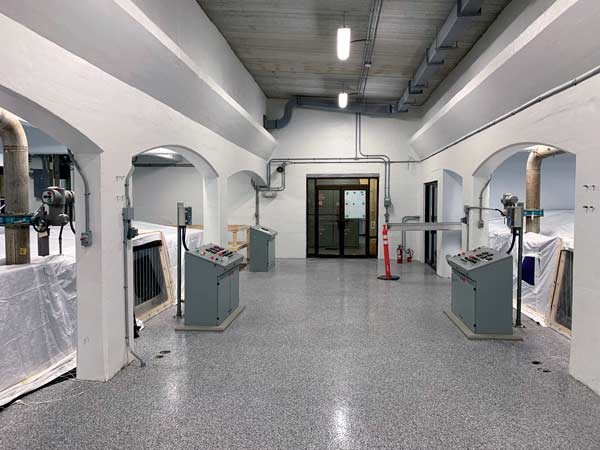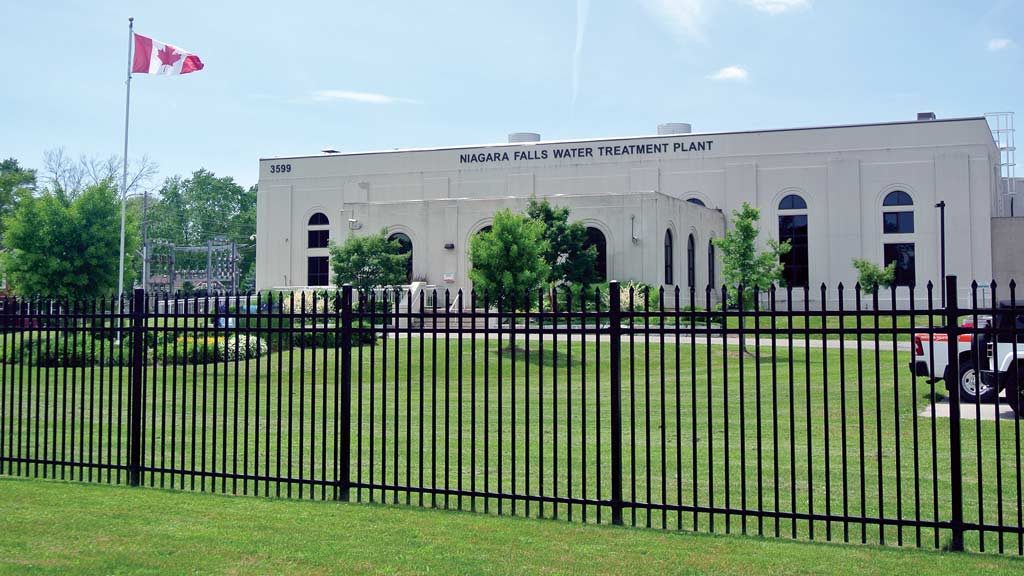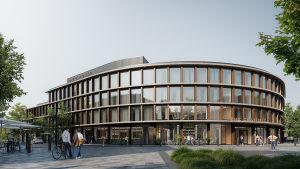Constructed in 1932 in the depths of the Great Depression, with a second plant added in 1957 and follow up modifications in 1980 and 2005, the filter plants at the Niagara Falls Water Treatment Plant have performed sterling service.
But the plants’ granular activated carbon filters have reached the end of their service life and are now the focus of an intense and carefully co-ordinated $11.2-million rehabilitation which started last October.
General contractor Maple Reinders has been operating with two shifts and conducting some weekend work to complete a ‘milestone target’ by March 31.
That’s the deadline for Niagara Region to qualify for a $4.1-million Clean Water and Wastewater Fund grant, says Lisa Vespi, a senior project manager with the region’s water-wastewater department.
The contractor has been “working diligently and has put significant resources on the project” to reach that date, says Vespi, explaining the project was timed to occur during the fall and winter when water demand is lower.
There are 12 filters—four in the 1932 plant and eight in the 1957 plant—and they are comprised of open top, cast-in-place rectangular concrete tank structures with various pipework, channels and valves, and other equipment.

Under a design by WSP Canada Inc., they are receiving a long list of improvements including painting and coating removal, filter media replacement, the application of new waterproof coating—as well as epoxy coating of the walls above the filters—and structural repairs. Extensive structural repairs and other upgrades of the building’s exterior are also being carried out.
While the majority of particulates are removed in the sedimentation phase of the water treatment process, filtration is a critical and legislated component to ensure water is safe for consumption, says Vespi, in stressing the importance of filter buildings and why they need to be maintained.
As she describes it, the work being done by Maple Reinders is intricate, more than a bit challenging, and has to be done in phases as the plant is a live operation. Only a maximum of four filters can be taken out of commission at one time. The phasing includes two in plant one and four in plant two.
Before the rehabilitation can begin, valves are shut down to ensure the filters are not producing water and isolated work zones created with the erection of tarped partition walls. In the “unlikely event of a breach” from those zones the adjacent operational filters are also covered with tarps to protect the drinking water, she says.
A critical procedure in the process is lead abatement and that is achieved by sand blasting. To control the spread of dust, there are a number of safeguards including air monitoring, maintaining negative pressure through compressor vacuuming, and “constant cleaning.”
Following the rehabilitation in each filter phase, a 14-day performance run test must be completed by a regional/contractor team to ensure the new filter components (including media, troughs and coating systems) are performing as intended. Water quality tests are also conducted before the filter is put back into operation.
During those performance tests the contractor is planning and setting up for the rehabilitation of the next phase. Some of this preparation work includes installing the delineation walls and filter covers and cleaning up the site.
Scheduled for completion this coming August, the project was scoped out in 2016, with WSP’s design taking from the fall 2017 to fall 2018 to complete.
Given the need for environmental protection and that the selected contractor would be working at an operating building, field investigations and extensive planning was conducted was carried out before a tender was issued, says Vespi.
In the past 15 years several components of the water treatment plant have undergone significant capital construction upgrades, including a new roof superstructure, upgrades to sedimentation tanks, new travelling screens, a new on-site reservoir and disinfection system upgrades.
“It is not uncommon to replace various components in an existing treatment plant as they reach the end of their service life,” says Vespi, explaining that it’s less expensive than constructing a new facility.











Recent Comments
comments for this post are closed